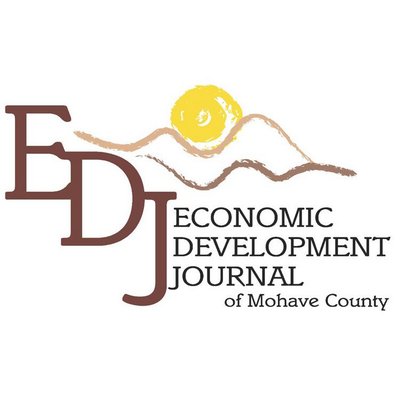NATION — A recent study has brought to light a sobering reality: the Western United States is experiencing a ‘hot drought,’ a phenomenon marked by the combination of limited rainfall and high temperatures, which is now considered the worst in over 500 years. This megadrought, encompassing parts of the southwestern U.S., the Pacific Northwest, and extending into areas of Texas and Mexico, is unique not only in its intensity but also in its duration, raising significant concerns for water management, agriculture, and regional ecosystems.
The term ‘hot drought’ aptly describes the current situation, where dry conditions are exacerbated by the evaporative power of higher temperatures. According to a study published in Science Advances, these conditions have become increasingly prevalent and severe across the western U.S. due to human-caused climate change. Karen King, the lead author of the study and an assistant professor at the University of Tennessee in Knoxville, notes, “The frequency of compound warm and dry summers particularly in the last 20 years is unprecedented”.
The research methodology employed by scientists like King involves a deep dive into the past, utilizing dendrochronology, the study of tree rings, to reconstruct a history of climate conditions. These tree rings act as natural archives, with narrow rings indicating periods of less water and denser rings correlating with hotter years. This method has allowed researchers to not only understand the severity of the current drought but also to compare it with historical events, thereby highlighting its exceptional nature.
Further insights into the megadrought’s severity are provided by a comparative analysis of soil moisture records. When the current 19-year period, from 2000 to 2018, was compared to the worst 19-year stretches of previous megadroughts, the current drought was found to be more severe than the earliest three and about on par with a 16th-century event. Researchers like Park Williams, lead author of a study published in Science, emphasize the role of climate change in this scenario. Williams states that without the influence of climate change, which has led to higher underlying temperatures, this drought would have ranked much lower in severity over the past 1,200 years.
Residents in affected regions, such as Southern Nevada and Arizona, have been witnessing the impact of the megadrought firsthand. Their observations and experiences underline a growing need for effective water management and conservation strategies. As one resident from Southern Nevada notes, the rising temperatures and prolonged drought have been a consistent trend for years, indicating a broader issue that extends beyond regional boundaries.
The significance of this megadrought cannot be overstated, not only in terms of its historical context but also for its implications on the present and future. The tree ring data, which forms the backbone of this study, illustrates a stark reality. For much of the last 20 years, western North America has been gripped by drought conditions that strain not only natural ecosystems but also agricultural practices, urban planning, and water resource management. The data indicates that the region is currently experiencing its driest period in at least 1,200 years, a finding derived in part by studying tree rings from thousands of sites across the Western U.S..
The impact of the megadrought extends beyond the natural environment, affecting the socio-economic fabric of the region. In areas like the Phoenix metro, which is projected to double in population in the coming years, the demands for water resources are escalating. Residents express concern over the continuing expansion and development, which significantly increases water usage in an already water-stressed region. The situation in Phoenix exemplifies the broader challenge faced by the entire Western U.S., where sustainable growth must be balanced against the limitations imposed by the ongoing drought.
One crucial aspect is the management of water resources. As the drought persists, there’s an increasing need for stricter water conservation measures. This might include revising water usage policies, investing in water-efficient technologies, and educating the public about sustainable water use. Regions like Southern Nevada have already been experiencing the effects of the drought for over two decades, emphasizing the need for long-term strategies to ensure water availability for future generations.
Another significant concern raised by the study is the role of climate change in exacerbating the severity of the megadrought. The research suggests that the current drought conditions are being intensified by higher temperatures resulting from human activities, particularly the burning of fossil fuels. This correlation between climate change and the megadrought indicates that efforts to mitigate climate change could be crucial in alleviating some of the drought’s impacts. It underscores the need for comprehensive policies aimed at reducing greenhouse gas emissions and promoting sustainable practices.
Finally, the study serves as a stark reminder of the interconnectivity between different environmental phenomena. The megadrought is not just a water issue; it is intrinsically linked to broader climatic patterns, land management practices, and even urban planning. This interconnectivity suggests that solutions to the drought must be holistic, considering various factors from ecological conservation to urban development. The urgency to act is clear, as the current trends, if left unchecked, could lead to even more severe consequences for the Western United States and beyond.
The implications of this megadrought extend to various sectors, particularly agriculture, which is a major economic driver in the Western U.S. The prolonged dry conditions, combined with extreme heat, have placed immense stress on crop production. Farmers are facing challenges in maintaining adequate water supply for irrigation, leading to reduced crop yields and increased costs. This situation not only affects the agricultural industry but also has ripple effects on food supply chains and prices, impacting consumers both regionally and nationally. The need for innovative agricultural practices that are resilient to drought conditions has never been more critical.
Wildfires are another dire consequence of the megadrought. The dry conditions, exacerbated by high temperatures, have created an environment ripe for wildfires. These fires not only cause immediate destruction but also have long-term ecological impacts, such as habitat loss and soil degradation. The increased frequency and intensity of wildfires are a stark reminder of the interconnectedness of climate conditions and forest management practices. It highlights the need for effective forest management strategies that can mitigate the risk and impact of wildfires in these drought-prone regions.
The megadrought also poses significant challenges to urban areas, particularly in terms of water supply and management. Cities and towns in the Western U.S. are reevaluating their water usage policies and infrastructure to adapt to the reduced water availability. This includes exploring alternative water sources, such as reclaimed water, and implementing stricter water conservation measures. The situation underscores the importance of sustainable urban planning that takes into account the increasing likelihood of prolonged droughts due to climate change.
From an ecological perspective, the megadrought is affecting biodiversity and ecosystems. Aquatic ecosystems, in particular, are under stress due to reduced river flows and shrinking lakes, impacting fish populations and other aquatic species. Terrestrial ecosystems are also being altered, with changes in vegetation patterns and increased susceptibility to invasive species. These ecological changes have far-reaching implications for wildlife, ecosystem services, and biodiversity conservation.
Looking ahead, the megadrought underscores the importance of proactive and collaborative efforts to address water scarcity and climate change. This includes not only regional efforts but also national and international cooperation. Policymakers, scientists, environmentalists, and community leaders must work together to develop and implement strategies that mitigate the impacts of the megadrought and build resilience against future climatic extremes. The findings of these studies serve as a call to action, emphasizing the urgency of addressing the interconnected challenges of water scarcity, climate change, and sustainable development.
The megadrought’s impact on public health and quality of life cannot be ignored. Reduced water quality and quantity pose direct risks to human health, particularly in communities with limited resources. Furthermore, the increased frequency of dust storms and poor air quality due to drought conditions can exacerbate respiratory problems. As such, public health initiatives must integrate considerations of drought and climate change into their planning and response strategies. This includes ensuring access to clean water, addressing air quality issues, and providing resources to communities disproportionately affected by these environmental challenges.
In the face of this unprecedented megadrought, the role of technology and innovation in water conservation and management is becoming increasingly vital. Innovations in water recycling, desalination, and efficient irrigation systems offer potential solutions to address water scarcity. Moreover, the development of drought-resistant crop varieties and farming practices that require less water can significantly mitigate the impact on agriculture. Investing in these technologies and practices is essential for adapting to the ongoing drought conditions and securing a sustainable water future.
The megadrought also brings into focus the importance of individual actions and community-level initiatives in conserving water and mitigating climate change. Simple measures like reducing water usage in homes, supporting local water conservation programs, and advocating for sustainable policies can collectively make a significant impact. Community engagement and education are crucial in fostering a culture of sustainability and resilience against environmental challenges like droughts.
As the Western U.S. grapples with this historic megadrought, the lessons learned can provide valuable insights for other regions facing similar challenges. The experiences of adapting to severe water scarcity, managing resources sustainably, and responding to climate-induced environmental changes are relevant globally. Sharing knowledge, strategies, and technologies across regions can help build a more resilient and sustainable future in the face of escalating climate challenges.
— Jeremy Webb.
Arizona AG joins FTC and coalition of states to challenge merger of Kroger & Albertsons supermarkets
Attorney General Kris Mayes, the Federal Trade Commission (FTC), and a bipartisan coalition of states, today announced the filing of a lawsuit that challenges the proposed merger of Kroger and Albertsons. These companies are the country’s two largest national supermarket chains, and this merger presents a significant risk of reduced competition and higher food prices nationwide. In Arizona, the two chains are the fourth and sixth largest employers, with a combined 35,000 employees across 250 stores. The companies also operate under Fry’s, Smith’s, and Safeway brands in Arizona.
Read More

























